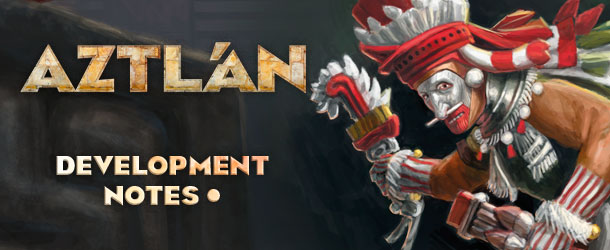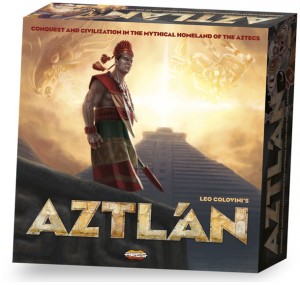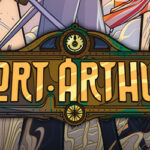Roberto Di Meglio, director of production of Ares Games, speaks about Aztlán, the new game by Leo Colovini that will be released at the Essen “Spiel 2012”.
I’ve known Leo Colovini for many years, but in spite of a long cooperation in many ways, the only time that I had the honor to publish something from him was when Nexus Editrice, a company I founded almost 20 years ago, became for a brief time the publisher of Lex Arcana, the historical fantasy role-playing game he coauthored with Dario De Toffoli, Marco Maggi and Francesco Nepitello.
However, as we often were co-exhibitor at the Nuremberg Toy Fair, I followed his career as a game designer very closely, and I often had a chance to test many of his games in prototype form, from Carolus Magnus to Cartagena, often the day before he pitched them to the top German publishers and got a contract signed.
While I always admired his skill and creativity as a game designer, the style of most of his creations was quite distant from the games I was looking for, as a publisher. Leo is definitely a master in the “euro style”. His games have clean, original mechanics and just as much theme as necessary, to avoid their fine strategy to be clouded by the needs of simulation. And in his games, player interaction almost never is pure conflict… not a single drop of “blood” is ever spilt in one of his designs (except Lex Arcana, of course).
It became almost a recurring joke between us that, when we met, I asked Leo if he finally had a game that I could publish, and of course there was none – but a lot for companies like Amigo, Winning Moves and Ravensburger!
So, I was really surprised (and, initially, I thought of a new variant in our joke) when, during a chance meeting in the aisles of the Toy Fair, he replied “I think I do - I designed a war game, would you like to take a look at it?”. I did, and then I was immediately impressed by the beauty and simplicity of the design that, at the time, he simply called “Fog of War”, because of its core mechanic.
Fast forward to 2012, and Ares Games is looking for new games to expand its catalog. The company had just started releasing the first games, and while we had a lot of confidence about the business we could do with War of the Ring and Wings of Glory, we wanted to grow into other categories, such as Euro games and Children games. So I got in touch with Leo: the rights for Fog of War were still available, so we got the game under contract, and started to work on it to get it published as our 2012 Essen release.
It was during a series of playtest sessions handled by Marco Maggi and Francesco Nepitello (that most of you know as co-authors of War of the Ring and Micro Monsters) that they realized that Meso-American Myth was a perfect fit as the theme of Fog of War (which had a “generic” historical setting attached). One of the best mechanics in the game perfectly fits the way the Aztecs handled war and how they dealt with the people they subjugated. So, we started to delve more into the history of this people, and found out a lot of other good matches between their wars and civilization and elements of the game.
We decided we did not want to set the game in real history, as we liked the idea of exploring the myth of this people as well as their history. We read about the legend of Aztlán, the ancestral homeland of the Aztec people, and we thought that this mythic place could become the setting for the game. The conflict portrayed would be the struggle between the ancestors of the Nahuatl (Aztec) people, to decide who is exiled and who has the right to remain in Aztlán, and the Gods themselves could meddle with the affair of mortals. The civilizations would develop with technologies suited to those that the Aztecs actually used in historical times, and the “game rounds” would become the “ages” which, according to Aztec mythology, marked the flow of history, with world-changing events between one age and the next one. At the end of five ages, this mythic world would come to an end, and so would the game. The winner would be rewarded with staying in Aztlán, and the losers would become exiles to the “real world”.
After this introduction, in the next article we’ll jump straight into the game mechanics, and we’ll learn how the game works.











Follow Us on